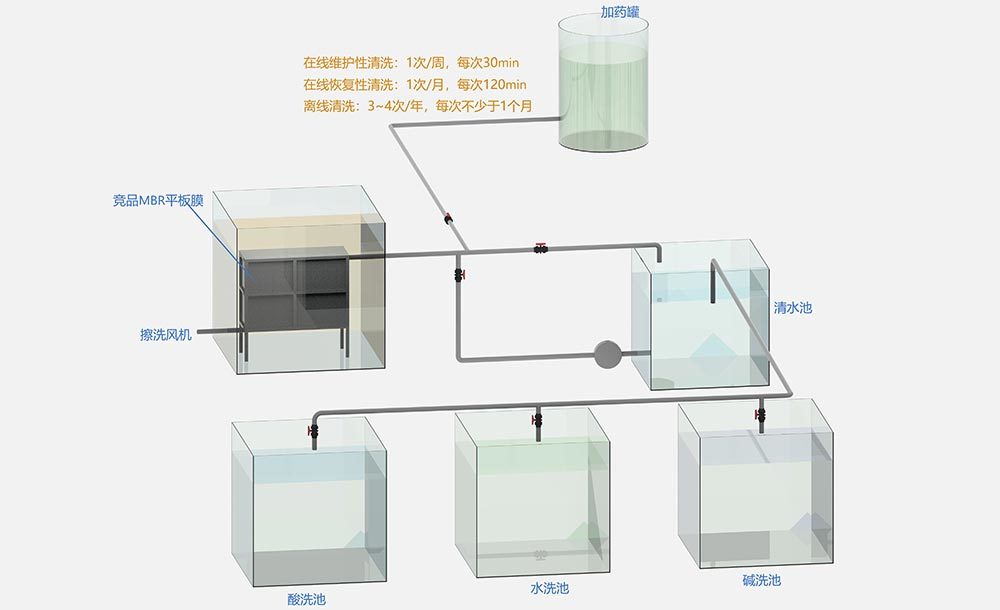Precautions for cleaning MBR flat sheet membranes
Published Time:
2021-02-26

MBR flat sheet membranes are frequently used in wastewater treatment projects, but due to the poor water quality, they require regular cleaning. Online chemical cleaning methods for MBR flat sheet membranes used in treating domestic sewage are as follows:
1. Alkali cleaning. Prepare a mixed aqueous solution of 2000-5000 ml/L sodium hypochlorite and 1000 mg/L sodium hydroxide. Using a high-level water tank, statically pressurize the solution into the suction pipeline to the membrane elements, using 2-3 L/sheet, and soak for 5 hours or more.
2. Acid cleaning. Prepare a 1000 mg/L oxalic acid solution for online cleaning, with the water volume matching the pore space, and soak for 1 hour.
Offline chemical cleaning methods for MBR membranes used in treating domestic sewage are employed when online cleaning cannot resolve the issue. The MBR flat sheet membrane elements need to be removed from the module, placed on a flat surface or in a clean container, and rinsed with a pressure water jet. After magnetic physical cleaning, place them in a dedicated container, add an alkali cleaning agent (2000-5000 ml/L sodium hypochlorite and 1000 mg/L sodium hydroxide solution), or an acid cleaning agent (1000 mg/L oxalic acid solution), and soak for 5 hours or more, which can effectively restore the filtration capacity of the membrane. After removing the membrane elements, they should be promptly placed in a reaction tank or stored in clean water to prevent direct sunlight and drying of the membrane surface.
So, what precautions should be taken when cleaning MBR flat sheet membranes?
1. Avoid rough handling such as inverting, dropping, impacting, or excessively pulling the container.
2. Avoid insufficient ventilation, high-temperature objects, sparks, and contact with acids.
3. Seal the container after use.
4. Do not arbitrarily create dust or vapor to avoid leakage, spillage, or splashing.
5. Do not eat or smoke outside the designated area.
6. After operation, thoroughly clean hands, face, etc., and rinse your mouth.
7. Unauthorized personnel are prohibited from entering the operating area.
8. Do not bring gloves and other contaminated protective gear into the rest area.
9. When the operating area is indoors, use a local exhaust device.





